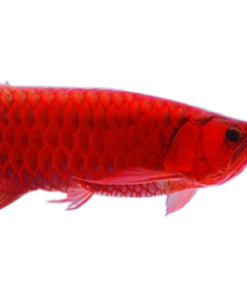Understanding Arowana Dying Symptoms: Signs to Watch Out For
Arowanas are a popular and fascinating species of freshwater fish that have captivated aquarium enthusiasts worldwide. These majestic creatures, with their distinctive elongated bodies and striking appearances, require specialized care and attention. Recognizing the signs of distress or impending death in Arowanas is crucial for their well-being and the success of any Arowana-keeping endeavor.
Overview of Arowana Species
Arowanas belong to the family Osteoglossidae and are known for their unique characteristics. Several species are commonly kept in aquariums, each with its own specific requirements and care needs. Understanding the unique traits and needs of the Arowana species you are keeping is essential for providing the best possible environment and ensuring their long-term health.
Common Causes of Arowana Deaths
Arowanas can succumb to various environmental factors and diseases, and it is important to be aware of these potential threats. Environmental factors, such as water quality issues, temperature fluctuations, and inadequate tank size or setup, can significantly impact the well-being of Arowanas. Additionally, Arowanas are susceptible to a range of diseases and infections, each with its own set of symptoms and treatment approaches.
Recognizing Dying Symptoms
Identifying the signs of an Arowana in distress or nearing the end of its life is crucial for providing timely intervention and care. Behavioral changes, such as loss of appetite, lethargy, and unusual swimming patterns, can be early indicators of an underlying issue. Physical symptoms, including faded or discolored scales, visible wounds or lesions, and labored breathing, can also signal that an Arowana is in trouble.
Steps to Take When Noticing Symptoms
When you notice concerning symptoms in your Arowana, it is essential to take immediate action. Start by testing the water parameters and performing water changes if necessary. If signs of disease are present, isolate the affected fish to prevent the spread of infection. Seeking the guidance of a veterinarian experienced in fish care or consulting with knowledgeable aquarium hobbyist communities can also be invaluable in determining the appropriate course of action.
Preventative Measures
Proactive care and preventative measures are key to maintaining the health and well-being of your Arowana. Ensuring optimal water conditions through regular testing, proper filtration, and adequate aeration is crucial. Providing a suitable tank size and environmental enrichment can also contribute to the overall well-being of your Arowana. Additionally, quarantining new fish before introducing them to your main tank can help prevent the introduction of diseases.
Conclusion
Recognizing the signs of distress and impending death in Arowanas is a critical aspect of responsible Arowana ownership. By understanding the common causes of Arowana deaths, being vigilant in observing behavioral and physical changes, and taking prompt action when necessary, you can increase the chances of maintaining a healthy and thriving Arowana population. Staying informed, implementing preventative measures, and seeking professional guidance when needed will contribute to the long-term success and well-being of your Arowana aquarium.


